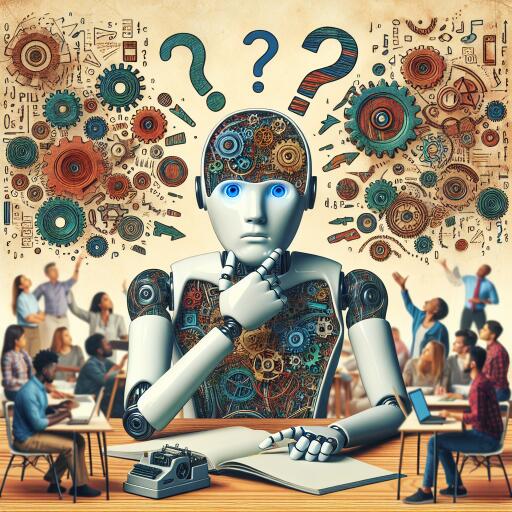ChatGPT’s Quirky Behavior: A Reflection of Our Own Interaction Patterns?
In recent developments, ChatGPT, the artificial intelligence chatbot developed by OpenAI, has been showcasing some peculiar tendencies. From becoming unexpectedly lazy to adopting a slight sassiness, users have been witnessing a side of ChatGPT that seems almost too human. OpenAI, the brains behind this digital creation, has acknowledged these quirks and deployed a fix in January, aiming to bring back the chatbot’s usual cooperative demeanor.
But what’s at the root of these unusual behaviors? The answers might not be straightforward, owing to the complex AI models like GPT-4 which power ChatGPT. These models are not static; they evolve, learning from a wealth of data generated through user interactions. “A model like GPT4 is not a single, unchanging entity. It’s a learning system, continuously adapting based on the immense volume of user feedback it receives,” explained James Zou, a professor and AI researcher at Stanford University, in a discussion with Business Insider.
This continuous evolution is crucial for ChatGPT’s ability to become more conversational and useful. It utilizes a technique known as reinforcement learning from human feedback, which helps the AI model learn from and adapt to user preferences. However, this adaptation process is not without its challenges. With ChatGPT now reportedly engaging with around 1.7 billion users, the growing pains are becoming more evident. Users have reported incidents where the chatbot refused tasks or provided unexpectedly terse responses, with some speculating that the AI was taking a metaphorical “winter break.”
OpenAI’s CEO, Sam Altman, has assured users that ChatGPT should now exhibit less of what some might call “laziness.” Yet, understanding why GPT-4 makes certain decisions remains a challenge. Often described as “black boxes,” these AI models can behave in ways that even their creators cannot fully predict or explain. This unpredictability was highlighted by users claiming that offering a $200 tip could prompt longer responses from ChatGPT, shedding light on some of the chatbot’s inexplicable quirks.
According to Zou, some aspects of ChatGPT’s behavior can be attributed to the biases and patterns inherent in the vast pools of online data it is trained on. “These large models absorb an internet’s worth of text—encompassing countless websites and online forums. This inevitably includes a range of human biases and behaviors,” he noted. Furthermore, efforts by OpenAI to implement safeguards against misuse could inadvertently impact ChatGPT’s performance. Zou’s research at Stanford on open-source AI models suggests that attempts to make these systems safer can make them more hesitant to engage with certain queries.
OpenAI’s commitment to principles of harmlessness, helpfulness, and honesty has shaped their approach to moderating ChatGPT’s behavior. “However, prioritizing these values could lead to trade-offs, making the model less creative or less useful to some users,” Zou added. This balance between safety and utility is a delicate one, potentially contributing to the noticeable shifts in ChatGPT’s behavior.
As OpenAI continues to fine-tune ChatGPT, the interplay between user interactions and AI development will remain a focal point. The chatbot’s evolving behavior is a testament to the complex, dynamic nature of AI technology—and perhaps a mirror reflecting our own digital behaviors back at us.
OpenAI did not provide a comment in response to inquiries from Business Insider at the time of publication.










